When we came back to Springfield for Dad’s surgery, we went straight to Reliable RV for some needed repairs. We had stayed on their lot while they did repairs on Bessie last time we were in Springfield (conveniently located just blocks from Dad). Since then we’d compiled a new list of needed minor repairs, and they were fine with us staying on the lot again, but they couldn’t get Bessie in for a week, and then they needed another week to get parts delivered.
So even though Dad is better than fine, we’re still here, waiting for parts. We were starting to get a little restless when Dad suggested a day trip down to Bentonville, Arkansas where there is a fantastic art museum. He wasn’t up for that many hours in the car, but he was happy to babysit Bailey and Gypsy while we took a day to ourselves. Normally while traveling, we’re weighted down with the logistics of motorhome, cat, and dog. So it was a real treat to just take off for the day in the car, adding whatever spontaneous side trips called to us.
Precious Moments Chapel
What better way to kill time in Southwest Missouri than visiting the free Precious Moments Chapel in Carthage? Over the years, we’d laughed at the billboards proclaiming this tourist trap to be “America’s Sistine Chapel.” Why not start our day with an ironic chuckle?
Precious Moments started as a cartoon by Samuel J. Butcher in the 1970s. Cutesy teardrop-eyed children and angels sharing insipidly precious moments together. The drawings became hugely popular greeting cards and posters, followed by collectible figurines. Samuel Butcher, once a poor kid living in a shack in Missouri and scavenging butcher paper from trash bins for drawing, became a millionaire at a young age.
A devout Christian, Butcher was committed to doing good with his money. He started an orphanage in the Philippines, where he is now retired. And the Precious Moments Chapel is one of the ways he wants to help and inspire others.
I’ve been to the Sistine Chapel, and any comparison of the two is a bad joke. I had to bite my tongue a bit to keep a respectful expression on my face. But after reading about the guy and what he’s done, how he lost a son at a young age and has reached out to other families who’ve lost children, his work with the orphanage… he’s not a bad guy, really. Just not a good artist.
George Washington Carver National Monument
A bit further down the highway, we saw signs for the George Washington Carver National Monument and thought a dip into black history might redeem us after so many wasted precious moments. This turned out to be a wonderful museum.
George Washington Carver was born into slavery near the end of the Civil War. As an infant, he and his mother and older sister were kidnapped from their slave shack by thieves. George was found, nearly dead from whooping cough, but his mother and sister were never found. His father, a slave on a nearby plantation, had been killed in a logging accident. Moses and Susan Carver raised both George and his older brother James (who had not been kidnapped) as their own. They lived in a small log cabin together, and the Carvers educated the boys as best as they could. George, who’s ill health kept him home with Susan instead of out in the fields with Moses, learned how to crochet, knit, play violin, and draw. He was fascinated by nature and plants and he cultivated a garden of special plants he called his “pets.” At a young age he was consulted by farmers from all around as a plant doctor.
George thirsted for education and left home as a boy to attend black schools in Kansas. He was the first black student to attend Iowa State, where he earned both a bachelor’s and master’s degree in science. Booker T. Washington hired Carver after he graduated to teach at the Tuskegee Institute, where he stayed until he died in 1943.
In his lifetime, Carver made huge contributions to agriculture. He introduced the practice of crop rotation, and steered farmers toward new crops, such as peanuts and soybeans, when the 1982 boll weevil infestation devastated cotton farms. He brought agricultural education directly to poor black sharecropping communities with a traveling classroom he called the “Jesup Wagon.” He was one of the most prominent African American men of his time and actively worked to advance the status of blacks in the early 20th century.
The Walmart Museum
Bentonville, Arkansas is home to the first store owned by Sam Walton, the late CEO of Walmart. “The Walton’s” five and dime store is now a museum extolling the history of Walmart.
I’m a staunch opponent of Walmart’s abhorrent employee practices and for years have avoided the stores altogether. But the museum was free, so what the hell. We took a quick breeze-through. There was the expected nostalgic propaganda. And a remake of Walton’s messy, 70s-tacky office. I was interested to see Walmart’s early “customer-is-always-right” return policy, and a display of items returned for unusual reasons: a mixer purported to be “possessed,”a wall thermometer that never told the right time, a pencil sharpener that couldn’t sharpen pens.
I would have enjoyed it more if I didn’t feel a little bit like I was crossing a picket line to be there. Seeing some of the Walton history reminded me that no issue is black and white. The company started with a strong commitment to community and to consumer satisfaction. Now if only the current CEOs could get it together to offer employees a living wage, maybe a few benefits.
Crystal Bridges Museum of American Art
Crystal Bridges was the real goal of our 260-mile day trip. We’d heard from several people how fabulous this world-class art museum was, and it fully lived up to its reputation. The museum was built by Alice Walton, daughter of Sam and head of the Walton Family Foundation, with the intention of benefiting their hometown community. The building is both huge and beautiful, designed by renowned architect Moshe Safdie. It houses a multi-million dollar permanent collection that includes art by Maxfield Parish, Picasso, Grant Wood, Norman Rockwell, Mary Cassatt, Georgia O’Keefe, and so many more. Traveling exhibits offer new shows every six months. Outside the museum are three miles of trails through Ozark forests, numerous sculptures, and a Frank Lloyd Wright house moved here from New Jersey (to open soon). Entrance to the museum is free to all, with a small fee for special exhibits.
We were there in time to see two special exhibits: Andy Warhol and Jamie Wyeth. Both were well worth the $4 entrance fee. I’m not a huge fan of modern art, but this particular Warhol exhibit focused on his depiction of animals and flowers, which I really liked. Jamie Wyeth has all the talent of his father (Andrew) and grandfather (N.C.), and his exhibit was my favorite part of the museum. I loved his classic realism, the way he captures the inner spirit of both people and animals. He and Warhol were good friends, and it was interesting to see the portraits they did of each other.
We spent the rest of the afternoon wandering through the many rooms of the permanent collection, which we could have spent days doing. Works as early as the 1700s, progressing up to present day. One of my favorites was a Maxfield Parish painting, “The Lantern Bearers.” And “Rosie the Riveter” by Normal Rockwell. There was even a marble sculpture of Sappho – surprising considering both the locale and the benefactor.
Crystal Bridges is as impressive as any metropolitan art museum, and here it is in this little town in northwest Arkansas, free to the public. I’m so glad we followed people’s advice and took the time to go.
Route 66 Drive-In
It was dusk as we drove back through Carthage, and we’d read online that there was a drive-in movie there, on the old Route 66. All summer we’d been wishing we could go to a drive-in movie, and here we were, at dusk, with the movie just about to start. We called Dad and he said the fur kids were fine, go ahead; he’d leave the door unlocked for us.
Kate and I both have such fond memories of drive-in movies. Going in pajamas with paper bags full of home-cooked popcorn and thermoses of lemonade. Playing on the swings and merry-go-round before the show. Lying on blankets on the station wagon roof. Why are drive-in movies a dying institution? It’s the epitome of summer family fun.
It was an exquisite evening. Warm, but not too hot, and completely absent of the mosquitos and flies that have plagued us all summer. All around us families set up with lawn chairs, playpens, and blankets, and I felt like I’d stepped back in time five decades. Dinner was hot dogs and popcorn for all of $8. And the movie, Jurassic World, was just good enough to keep us entertained till the end. An absolutely perfect ending to a wonderful, packed-in day to ourselves.

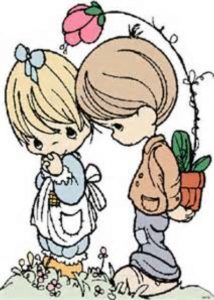
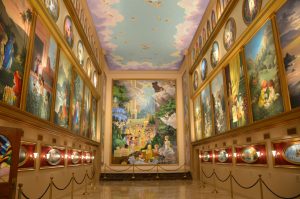
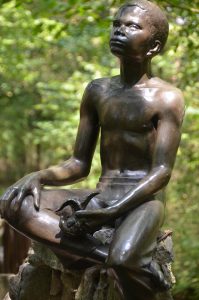
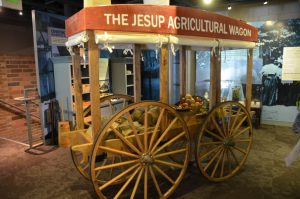
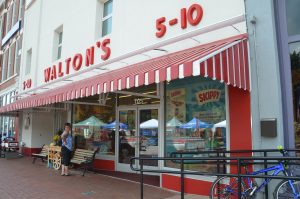
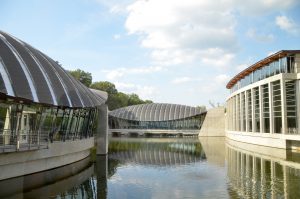
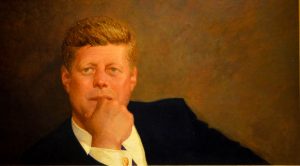
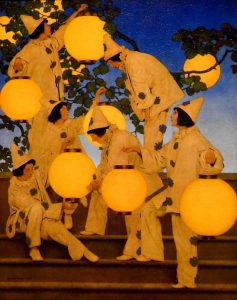
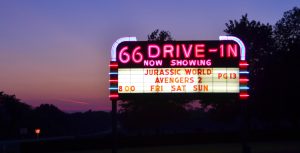
What a great full use of your day with free babysitting! I’ve heard so much about Crystal Bridges and we were so close last fall. We’ll for sure put this on our list for next time! The GW Carver museum I didn’t know about… another for the list.
You packed in a lot!